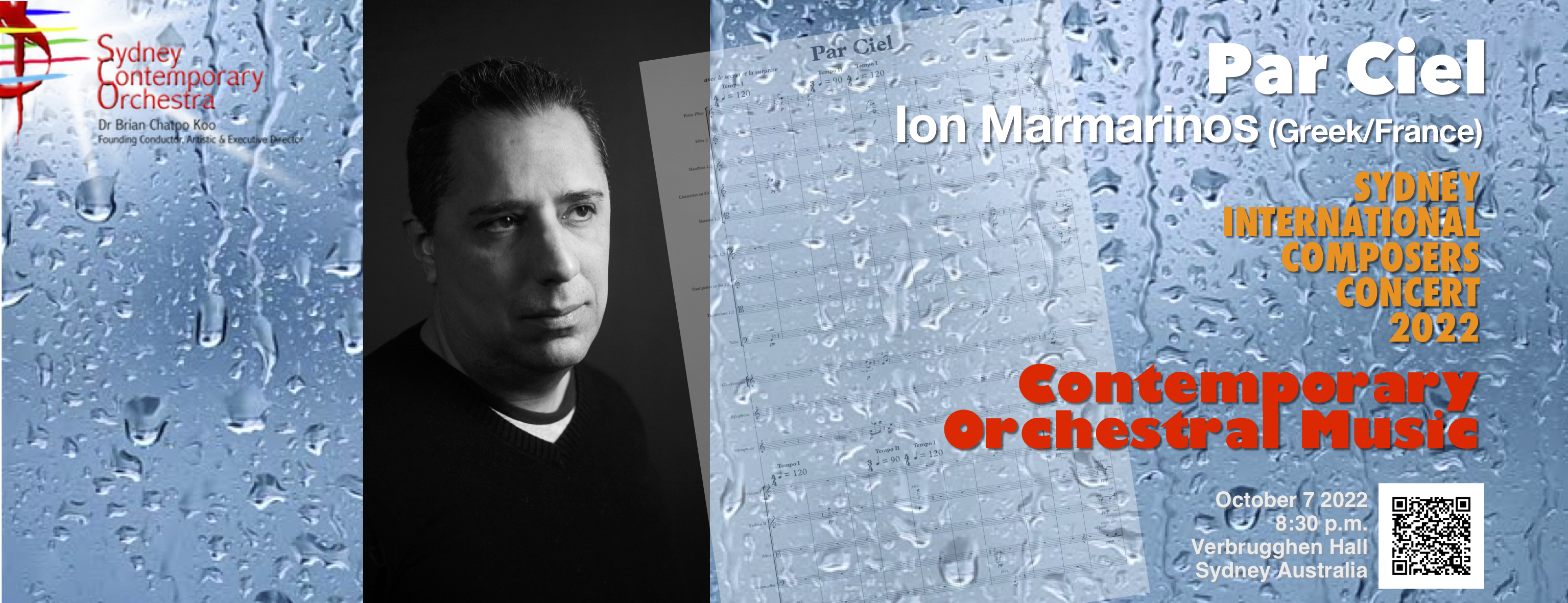Dr. Ion Marmarinos (b.1975) is a Greek composer based in France. His music has been described as “mesmerizing…the music emerges completely fresh, its inspiration fully honoured” [Fanfare Magazine] “self-contained well-defined…with a strongly characterised writing style…some of the most up – and – coming composers of today” [RMN Classical], “hauntingly engaging” [classikON], “instaure une dimension théâtrale’’ [ResMusica], “une musique toute en volutes, avec de belles atmosphères, toute de douceur” [Thierry Vagne], and “one of the highlights of the show” [The Guardian]
Inspired primarily by phenomena, imagery and patterns of temporal formations in nature while at the same time focusing on the presence and absence of memory, his music narrates stories of contrasts of complex structures. They attempt to create an experience of temporality that gradually camouflages the conscious perception of an organized time and therefore one that becomes personal to the listener.
Ion’s music has received numerous awards and distinctions such as the Matan Givol international composition competition (Israel), the Bruno Maderna international composition competition (Ukraine), the Kaleidoscope international composition competition (USA), King’s College London’s Collaborate and Engage innovation award (UK), the Ablaze Records’ New Choral Voices Series international competition (USA), RMN Classical’s Contemporary Chamber Music international competitions (UK), Petrichor Records’ international competition (USA), PARMA Records’ international competition for orchestral works, (USA, Czech Republic), Artistes en Herbe international composition competition (Luxembourg), Juventas international composition competition (USA), and the Ierapetra and Zografou national competitions for original theatrical score (Greece).
His compositions have been performed internationally, among others by the Lumina String Quartet, The Winds of The Americas, Lontano, EXAUDI, L’ Ensemble Alternance, L’ Ensemble Court – Circuit, Meraki Chamber Players, Unicamp Symphony Orchestra, Sydney Contemporary Orchestra, Vertixe Sonora Ensemble, Phoenix Ensemble, Roadrunner Trio and Coro Volante, in England, France, Italy, Ukraine, The Netherlands, America, Brazil, Australia and Greece in venues such as the Frederick Lowe Theatre (New York), The Black Box Theatre (New York), Salle Cortot (Paris), Teatro Comunale di Bologna (Italy), the Lviv Philharmonic Hall (Ukraine) and the Verbrugghen Hall (Australia). Working primarily in Greek and American independent productions, he occasionally composes music for the theatre, short films and contemporary dance.
Ion began his musical studies at the age of 5. At the age of 9 he started composing while studying piano and Hindemith theory at the Athenaeum conservatoire in Athens. He continued his musical studies in New York, London and Paris with Justin Dello Joio, Rob Keeley and Michel Merlet. He holds a PhD in composition from King’s College London, a Certificat de Perfectionnement in composition from L’ École Normale de Musique de Paris “Alfred Cortot”, an MA in composition from New York University, an MBA from the State University of New York at Albany and a BSc in business from the American College of Greece where he also studied psychology and mathematics.
He taught composition, theory and percussion in England, America and Greece, at King’s College London, The National conservatoire of Greece, Delfiko conservatoire, Athena conservatoire, at musical institutions and secondary schools in New York as well as privately.
His music is published by the Composers Edition and distributed worldwide by Ablaze Records, RMN Classical, Naxos Music Library and Albany Records of America.
Par Ciel

Par Ciel (by sky), a wordplay on partiels (partials), is inspired by the rain. Structured on multiple temporal groupings of pitches as well as on combinations of different registers of harmonics derived from the pitches of the three motifs utilised, the music reflects various sounds of drops initially resembling accidentally occurring tones. They conspire, combine with each other and accumulate to create snapshots and fragments of rainfall that is gradually transformed into blocks of moving, overlapping and palindromic harmonic progressions.
The piece highlights the breakdown of the orchestra’s aggregate sound and color into thin instrumental combinations set against thick(er) harmonic blocks. I perceived drops of rain as particles of a larger water mass and I compared them to partials of sound. They emerge and vanish as entities, which create their own structure, duration, density of texture, intensity, register and patterned formations.
